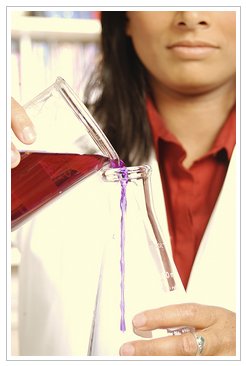Top Metro for Scientists & Engineers
Tri-Cities Washington Top Chosen For Scientists and Engineers
Washington State’s renowned Tri-Cities area, comprised of the cities of Richland, Kennewick, and Pasco, was officially selected as the number one place for scientists and engineers to live and work in the U.S., according to the fifth annual “Knowledge Worker Quotient” recently released by ExpansionManagement.com.
According to the site, the Quotient provides “a roadmap for where to find the best-educated workforce in America,” focusing on scientists, engineers, medical  doctors, and other professionals with PhDs, as well as those with graduate degrees and post-graduate degrees. Three hundred and sixty-two metropolitan statistical areas (MSAs) were judged and then ranked according to “their ability to provide the depth of talent and innovative environment upon which knowledge-driven technologies thrive.”
doctors, and other professionals with PhDs, as well as those with graduate degrees and post-graduate degrees. Three hundred and sixty-two metropolitan statistical areas (MSAs) were judged and then ranked according to “their ability to provide the depth of talent and innovative environment upon which knowledge-driven technologies thrive.”
The study was divided into four segments: the top 10 knowledge worker metros (the winning MSA was Ann Arbor, Michigan), the top metros for college-educated workers (Boulder, Colorado coming in first), the top metros  for university R&D spending (with California’s San Francisco-Oakland-Fremont area coming out as number one), and the top metros for scientists and engineers, the latter category of which the MSA of Kennewick, Richland, and Pasco came out on the top, beating out Pascagoula, Mississippi (second place), and Fond du Lac, Wisconsin, which came in third. To determine the winner, the Quotient compared the percentage of the U.S. workforce employed in jobs and careers in the science and engineering field, including scientists, engineers, and medical doctors.
for university R&D spending (with California’s San Francisco-Oakland-Fremont area coming out as number one), and the top metros for scientists and engineers, the latter category of which the MSA of Kennewick, Richland, and Pasco came out on the top, beating out Pascagoula, Mississippi (second place), and Fond du Lac, Wisconsin, which came in third. To determine the winner, the Quotient compared the percentage of the U.S. workforce employed in jobs and careers in the science and engineering field, including scientists, engineers, and medical doctors.
The other MSAs of the U.S. who made the top metro list for scientists and engineers were Huntsville, Alabama (fourth), Boulder, Colorado (fifth), the metro of San Jose, Sunnyvale, and Santa Clara, California (sixth), Olympia, Washington (seventh), Florida’s Palm Bay-Melbourne-Titusville area (eighth), Midland, Texas (ninth), and Durham, North Carolina (10th).
Ranking Metropolitan Areas Expectations
These top 10 communities in each sector are the areas that will “thrive and prosper in the future,” according to ExpansionManagement.com, and all have one common thread: the presence of at least one research university and other higher education options. According to NineSigma vice-president of innovation alliances Charles Prez, a good university or college is “the main attraction that brings technology businesses into a particular area” (ExpansionManagement.com). And when money is poured into these schools, and the schools, in turn, become big spenders in terms of research and development, these schools begin attracting the best professors, the top grants, and the top grad students who start their own businesses or use their knowledge to contribute to their surrounding community and society in general.
As far as these “main attractions” in the Tri-Cities area go, this region in Washington offers the Tri-Tech Institute, Kennewick’s small vocational school; Pasco’s two-year community college, Columbia Basin College; and, most notably, a public branch of Washington State University (WSU), located right in Richland, offering four-year programs in science, agriculture, horticulture, and liberal arts. WSU Tri-Cities is also conveniently located within a mile of Richland’s Pacific Northwest National Laboratory.
The Tri-Cities has been at an advantage with respect to growth and prosperity since its beginnings. Historically, communities and cities either thrived or died depending on their proximity to major sources of transportation. Richland, Kennewick, and Pasco are situated near the convergence of the Columbia, Snake, and Yakima Rivers, and were fueled by the Northern Pacific Railroad.
Today, communities and cities rise and fall based on the number of well-educated workers. The Tri-Cities MSA has no shortage there, seeing as they came out on top of the Knowledge Worker Quotient’s top metros for scientists and engineers.
